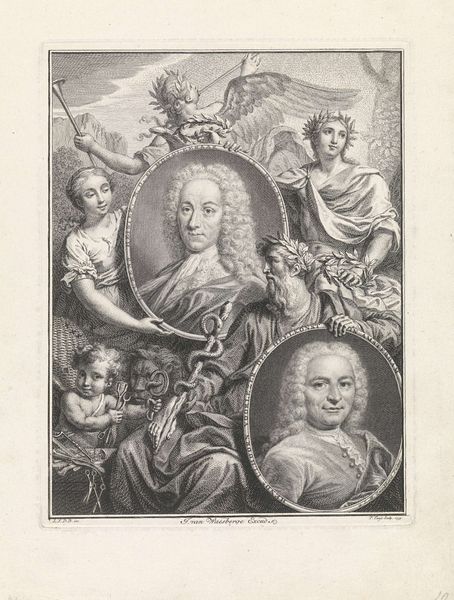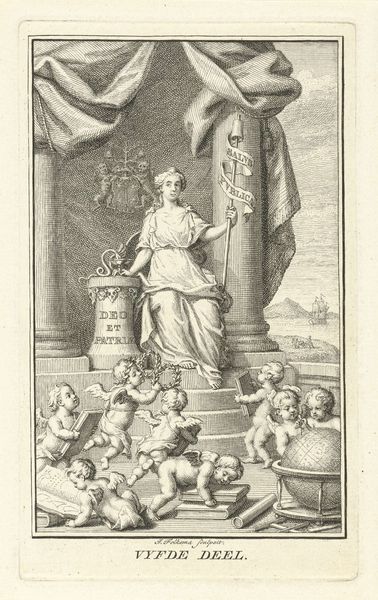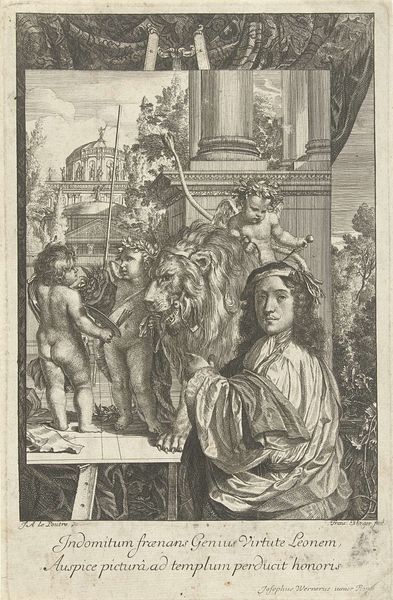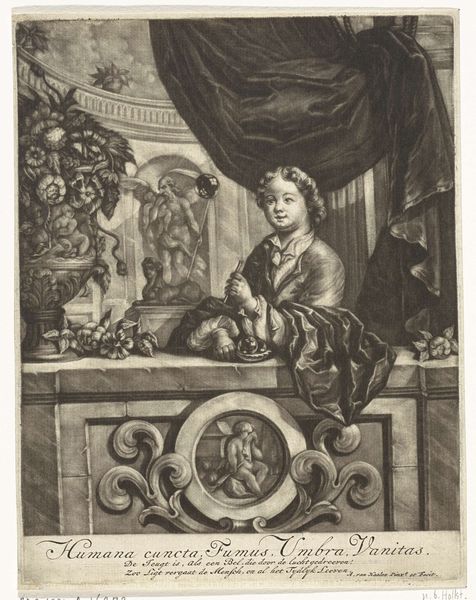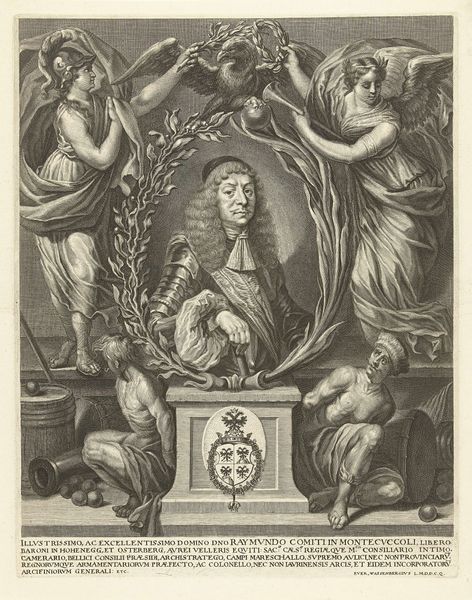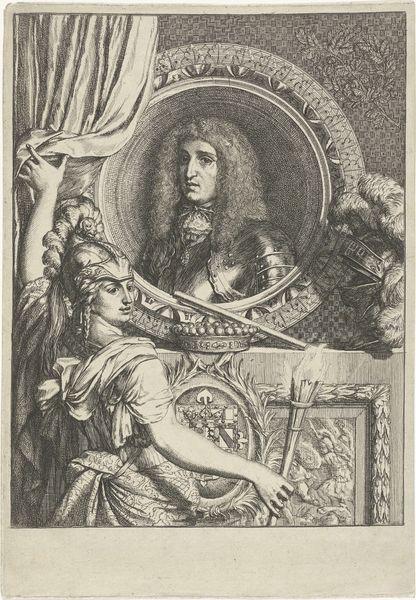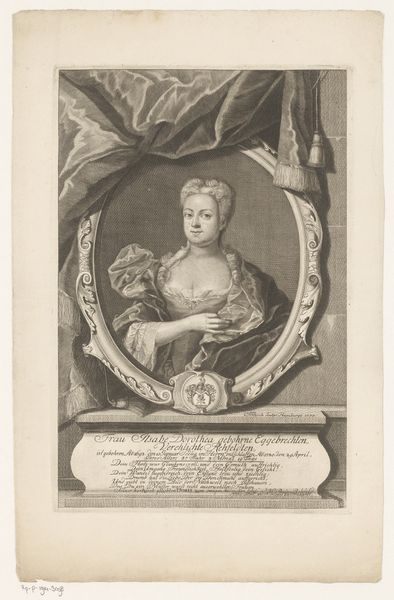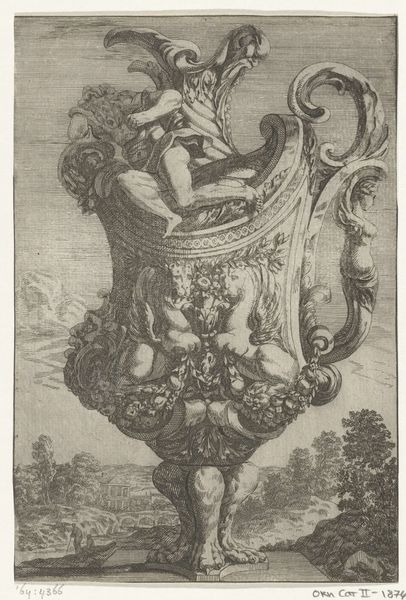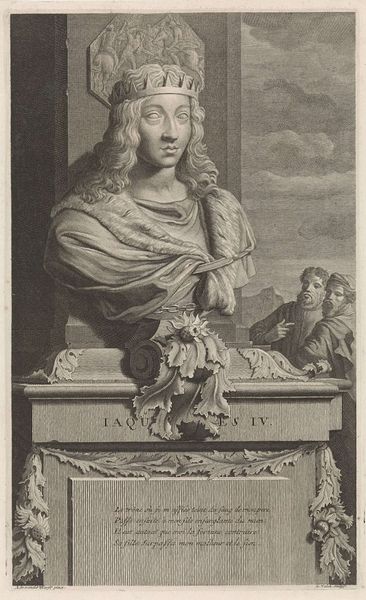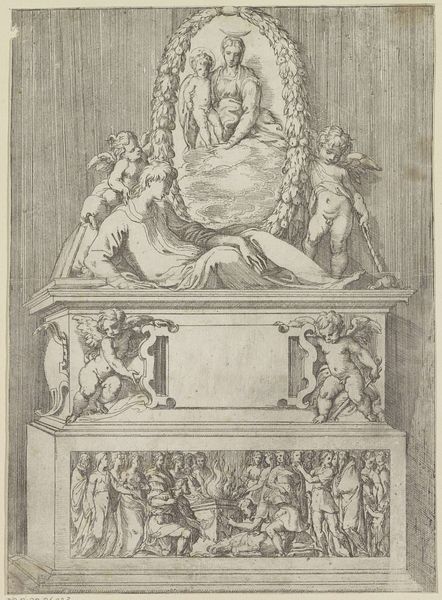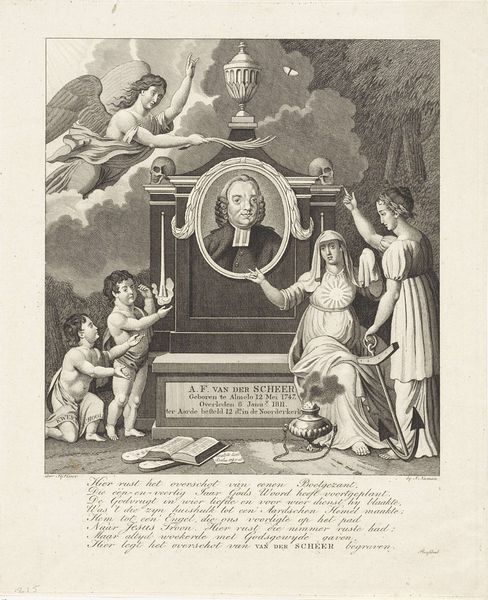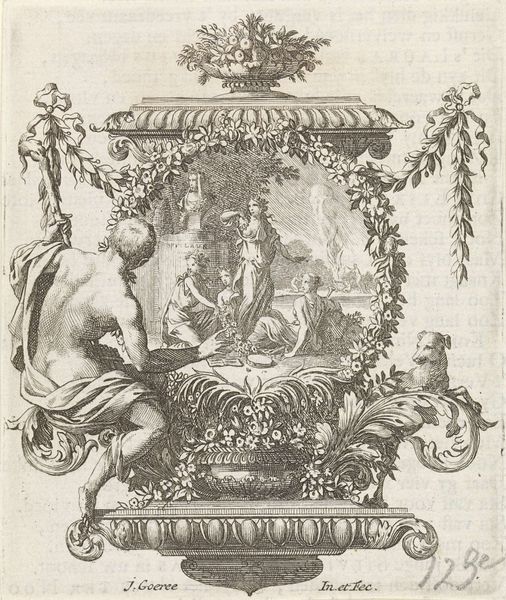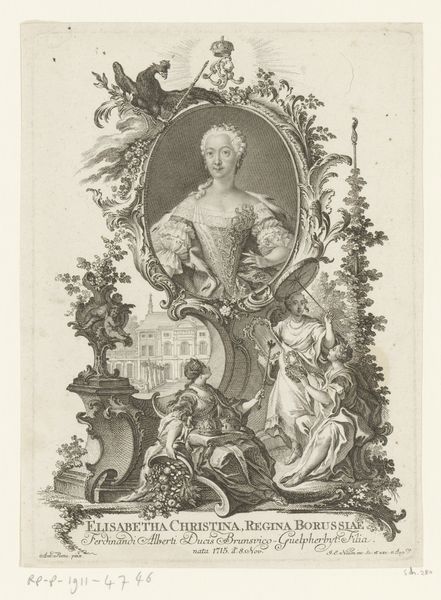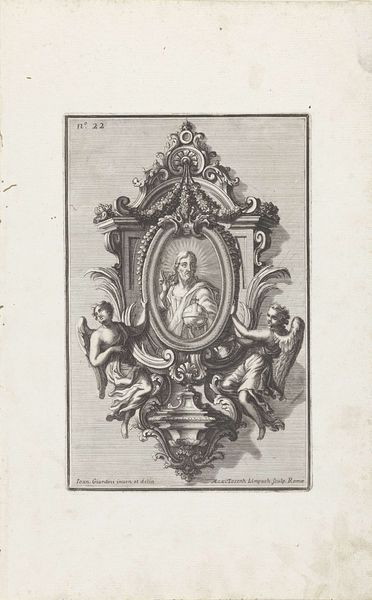
graphic-art, engraving
#
portrait
#
graphic-art
#
baroque
#
northern-renaissance
#
engraving
Dimensions: height 149 mm, width 96 mm
Copyright: Rijks Museum: Open Domain
Curator: Let's consider this engraving, "Portret van Anna Bille," dating from 1605-1647 by Simon van de Passe, housed in the Rijksmuseum. The detailed rendering achieved with the graphic art medium is remarkable. Editor: It feels so formal, so contained. The architectural framework around the portrait bust gives it a sense of monumentality. How do you interpret this work? Curator: The image operates within a highly codified system of representation, deeply rooted in its socio-political context. Let’s unpack this. It's not simply a portrait, but a carefully constructed representation of status and identity. Think about the symbols chosen – the architectural elements, the winged figures. What do they tell us about Anna Bille's position in society and the values associated with her? Editor: The angel and the objects atop the architectural setting evoke death. It is a commemorative piece. Curator: Precisely. But how does it challenge or reinforce existing power structures? We see here a woman memorialized, her intellect hinted at through the inscription that includes “Mufica Muling pereunt”, "Music and Muses have perished". What does it mean to publicly acknowledge, in a memorial to a wife, the loss of feminine artistry and knowledge? It acknowledges her personal value and intellect. Editor: I hadn’t thought about the impact of gender on the interpretation of symbols within the print. This engraving presents death not just as a great leveler but perhaps also, in Bille’s case, a disruptor of artistic ability and loss. Curator: It also forces us to ask what hasn't changed centuries later: the continuing struggle for recognition of women's intellectual contributions and the social dynamics surrounding commemoration and loss. A potent commentary then, and, unfortunately, now. Editor: Absolutely. It’s amazing how a deeper look reveals layers of meaning linked to societal issues that remain relevant.
Comments
No comments
Be the first to comment and join the conversation on the ultimate creative platform.
